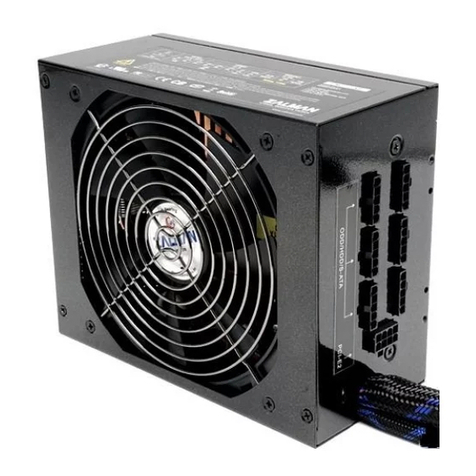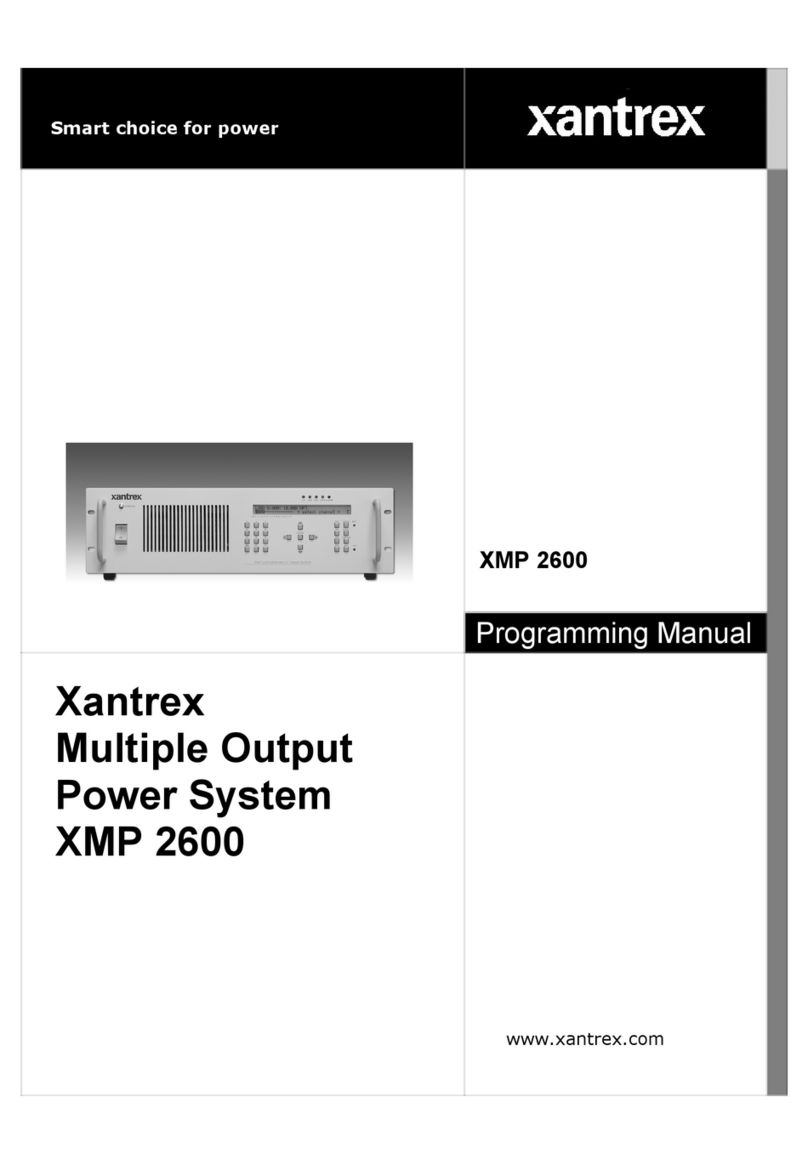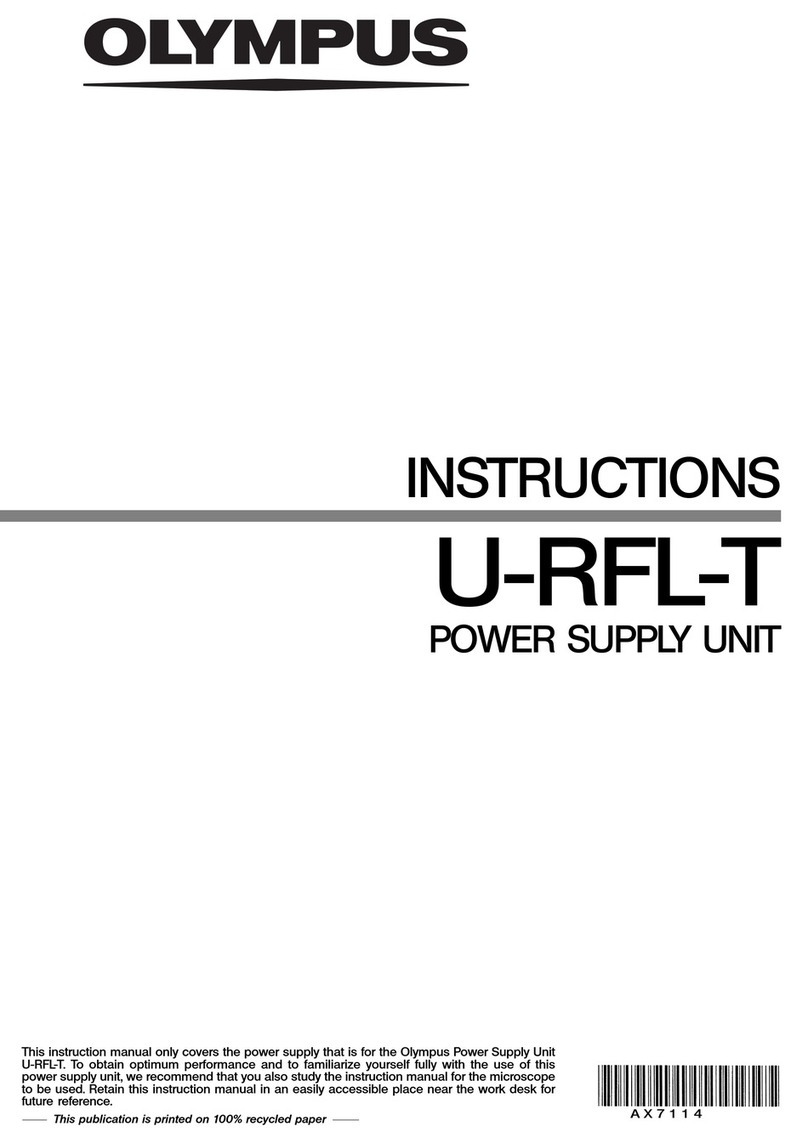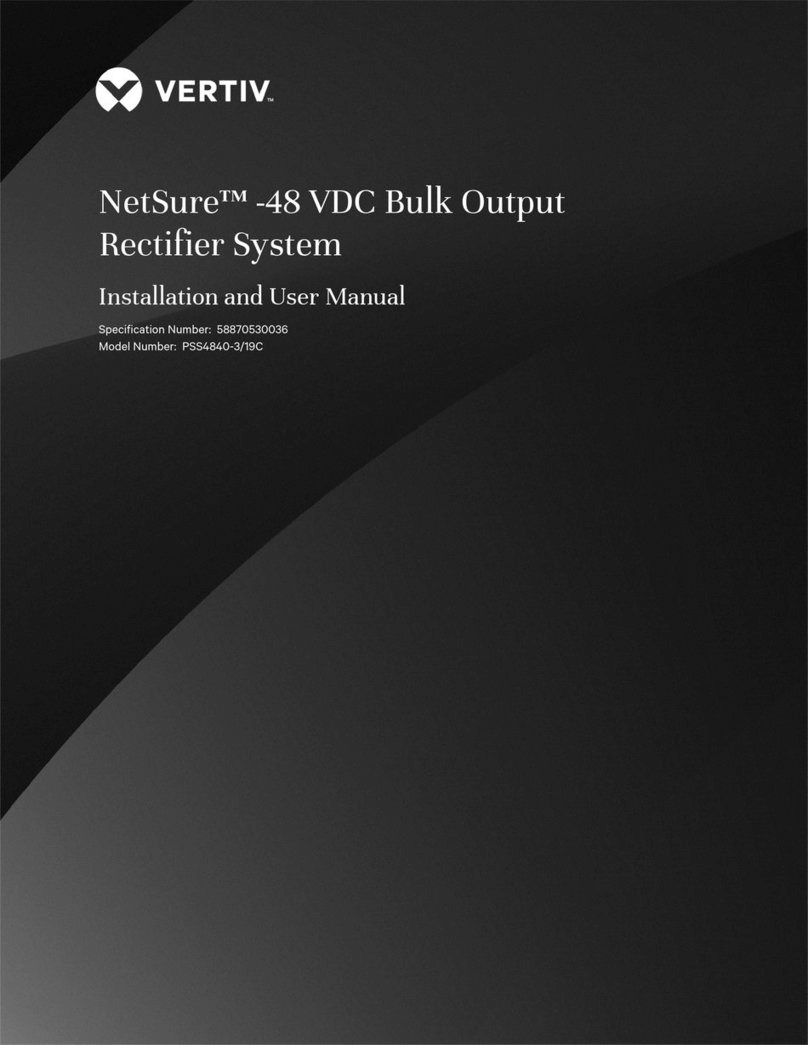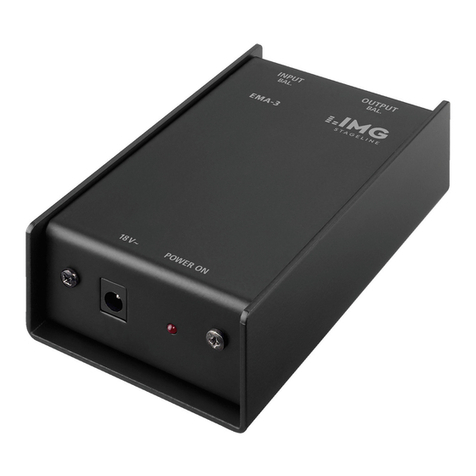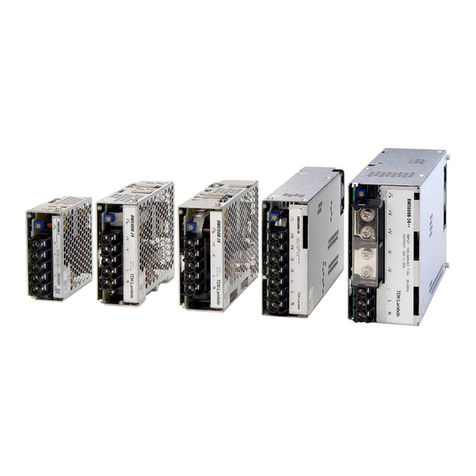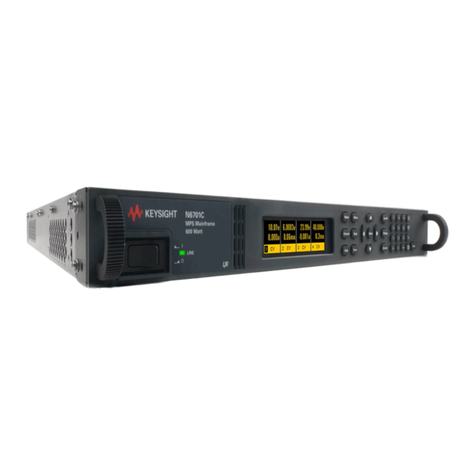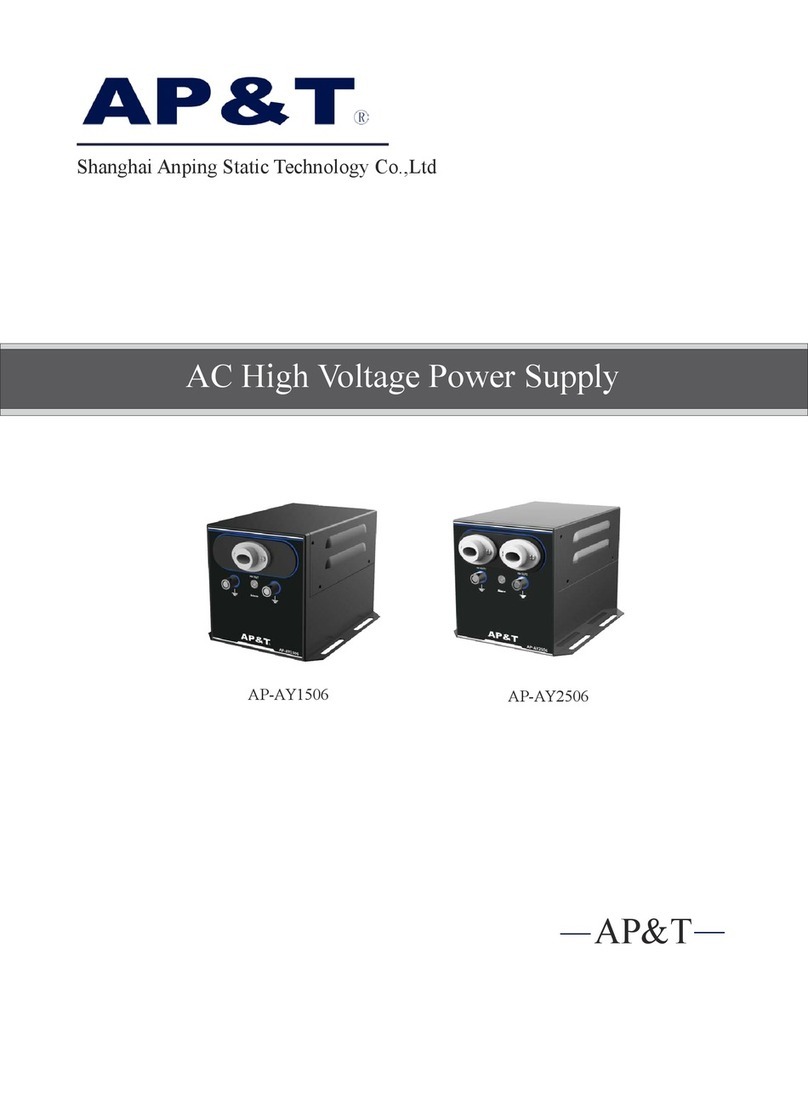SE Controls SHEVTEC 30A Manual

SHEVTEC PSU PANEL
Technical information and operating instructions
10 611
v4 09.19
+44 (0)1543 443060
sales@secontrols.com
www.secontrols.com
Please keep these operating instructions for future reference and maintenance.
Subject to technical modications. Diagram is not binding.
Introduction:
The SE Controls range of
control systems are built
and tested control panels
specically for Smoke and/
or Environmental Ventilation
Systems and for use with SE
Controls supplied equipment.
They must not be used for any other
application or in conjunction with
other manufacturers’ products without
prior consultation with SE Controls.
Application:
The SHEVTEC PSU Panel is a
powerful 24 Volt DC control
system designed for 2-wire
24V DC actuators in a smoke
control and/or environmental
ventilation system.
Operating from a 230VAC supply,
the SHEVTEC PSU Panel can deliver
up to 30/60/90 Amps to drive
24 Volt motorised actuators.
The SHEVTEC PSU Panel can be
mounted in a centralised plant
room location. Each SHEVTEC PSU
Panel can operate independently
or be linked to others to produce
a networked control system. The
networked control system in turn
can operate standalone or be linked
to a building management system.
Installation of this equipment must
only be carried out by competent
and qualied persons.
The Installer and user are requested
to read, understand and retain
this information pack with the
panel for future reference.
This information pack must be
retained for future reference by
the client and be made available
for reference by persons installing,
servicing or modifying the panel.

+44 (0)1543 443060
sales@secontrols.com
www.secontrols.com
Please keep these operating instructions for future reference and maintenance.
Subject to technical modications. Diagram is not binding. 2
Contents
Content
3. Connections 10
3.1. Power and
control connections
10
3.2. Actuator
connections
11
3.3. Manual
Control Points
12
3.4. Fire Alarm Inputs
(FRA, ARA, SMK)
14
3.5. Smoke
Detectors (SMK)
15
3.6. Day to Day
Switch (DYO, DYC)
16
3.7. Thermostat (TST) 17
3.8. BMS Analogue
Input (AI1)
18
3.9. Rain Sensor (RNS) 19
3.10. Network
Connection (NTA,
NTB, SCR)
20
4. System Design 21
4.1. System Design 21
4.2. Design checklist
for each PSU Panel:
21
4.3. Design checklist
for each MCP:
21
4.4. Design checklist
for each actuator/vent
21
Content
5. Installation,
Commissioning
and Fault nding
22
5.1 Fixing 22
5.2 Low voltage
connections
22
5.3. Mains Connection 23
5.4. Battery installation 24
5.5. First power-
up tests.
24
5.6. Basic Fault Finding 25
5.7. B at te r y
Replacement
26
6. Wiring Schematics 27
6.1. 30A PSU Panel 27
6.2. 60A PSU Panel 28
6.3. 90 PSU Panel 29
Content
1. General
Information
4
1.1. General Safety
Information
4
1.2. Health and Safety 4
1.3. Environment 4
1.4. User
Responsibilities
4
1.5. Maintenance 5
1.6. Installation
and Connection
5
1.7. Fault Finding 5
1.8. Contact
Information
5
1.9. Certication 5
1.10. EN12101-10:2005
Certication
5
2. Specication 6
2.1 Device Overview 6
2.2 PSU LED Status 6
2.3. PSU Jumper links 7
2.4. PSU Volt free
relay contacts
7
2.5. PNC Fuse Chart 8
2.6. PNC Internal
Control Board
Indicators
8
2.7. Recommended
Cables Types
9
2.8. Hierarchy
of Functions
9

+44 (0)1543 443060
sales@secontrols.com
www.secontrols.com
Please keep these operating instructions for future reference and maintenance.
Subject to technical modications. Diagram is not binding. 3
Important Notices
• Failure to install the
device in accordance
with the manufacturer’s
instructions will invalidate
any warranties.
• Failure to follow current
electrical regulations
governing the installation
of xed equipment can
lead to prosecution
and may invalidate
any warranties.
• Unless otherwise
indicated, you must not
adjust or remove existing
manufacturers cabling or
use terminal outputs or
inputs for purposes other
than their design without
written authorization
from SE Controls.
• Consumable items e.g.
fuse & batteries where
replacement is needed
must be replaced with
parts of equivalent
manufacturing standard/
compliance and rating.
SE Controls accepts no
liability for failure to
comply with the above
statements or the
installation and operation
guidance in the following
sections of this guide
and reserves the right to
invalidate the warranty
of the controller
SE Controls reserves
the right to introduce
any modications
and improvements to
the contents of this
publication without
the obligation of
giving prior notice.
• This equipment has no
mains on/o switch and is
intended for permanent
connection only.
• Do NOT allow abuse or
mishandling of the device.
• Do NOT adjust or
alter the device or its
enclosure including
labelling/marking.
• Do NOT use this controller
for any other purpose
other than that intended
by the manufacturer.
• Do NOT allow installation
of this equipment
by persons not
electrically qualied.
• Damage to the equipment
due to failure to test
the electrical integrity
of external wiring will
invalidate any warranties.

+44 (0)1543 443060
sales@secontrols.com
www.secontrols.com
Please keep these operating instructions for future reference and maintenance.
Subject to technical modications. Diagram is not binding. 4
1. General Information
1.3. Environment
This equipment is tted with a pair of lead
acid batteries which contain a corrosive gel.
These batteries must be regularly inspected
for damage and condition. Lead acid batteries
are classied as hazardous waste and must
be disposed by an authorised and licensed
recycler. They must not be disposed of in
household waste or ‘general waste’ skips.
Redundant electronic products are classied as
hazardous waste under the WEEE regulations
(Waste Electrical and Electronic Equipment).
Electronic parts must be disposed by an authorised
and licensed recycler. They must not be disposed
of in household waste or ‘general waste’ skips.
If recycling facilities are not locally available,
contact SE Controls who can arrange for recycling
and disposal of old electronic products.
1.4. User Responsibilities
United Kingdom Only: BS 7346-8:2013 is
a British Standard code of practice for the
planning, design, installation, commissioning and
maintenance of smoke control systems. Section
9 of the standard (Maintenance and Servicing)
states that frequent inspection of the system
should be undertaken by a named suitably-trained
member of the premises management team.
Routine inspection of the system should be carried
out in accordance with BS 9999:2008, Annex V.
For countries outside the United Kingdom:
Please check with the local the re authority in
your area regarding smoke control legislation,
dierent user responsibilities may apply.
Smoke control equipment should only be
maintained by a competent person with specialist
knowledge of smoke control systems and
sucient information regarding the system.
1.1. General Safety Information
Read and observe the information
contained in these instructions.
Please keep these safety instructions for
future reference and maintenance. Reliable
operation and the prevention of damage
and risks are only granted if the equipment
is assembled carefully and the settings are
carried out according to these instructions and
to the operating instructions of the drives.
Please observe the exact terminal assignment,
the minimum and maximum power ratings (see
technical data) and the installation instructions.
1.2. Health and Safety
Electrical Safety: Warning 230 V AC mains supply
can cause death, serious injury or considerable
material damage. Disconnect the equipment
from the power supply at all poles before
opening, assembling or carrying out any work.
Electrical safety of batteries: Short circuiting
of the lead acid batteries can cause high
currents to ow which can cause rapid heating
and a re risk. Take care to avoid this when
transporting and handling batteries. Keep
batteries disconnected during installation
and modication of the installation.
Competence: This equipment is designed for
professional installation only by qualied, trained
and safety conscious electricians or skilled and
trained sta with considerable knowledge of
electrical equipment installation. These instructions
must be followed and retained for future reference.
Application: this equipment is designed
exclusively for the purposes of controlling
automatically opening smoke and
environmental ventilation equipment.
Personal Protective Equipment: It is
recommended that suitable PPE is worn at all
times during the installation and connection
of actuator products in accordance with a
recommended safe system of work.
Handling and storage: This equipment is
heavy. Care must be taken in transportation to
the installation location and during tting. The
equipment must not be dropped, impacted,
allowed to get wet or abused in any other way.
Mishandling can result in serious damage to
the housing and the components therein.
Risk of crushing: this equipment can
automatically close windows and other appliances
without warning. Beware risk of serious
injury from crushing of hands or ngers.

+44 (0)1543 443060
sales@secontrols.com
www.secontrols.com
Please keep these operating instructions for future reference and maintenance.
Subject to technical modications. Diagram is not binding. 5
1.5. Maintenance
A smoke control system should be checked
and serviced periodically in accordance
to local smoke control legislation.
Smoke control systems have to be serviced and
checked for defects at least once per year by an
authorised, trained and competent person.
Within the UK a suitable service contract
with SE Controls is recommended for this
purpose (see page 7 for contact information).
All batteries need to be checked to see if
they are within specication and in good
condition at least once a year and replaced
at least every FOUR YEARS (please observe
the battery commissioning label).
Ensure that supply voltage and batteries are
disconnected before any maintenance work or
mechanical/ electrical alterations are made.
The system must be protected
against unintentional start-up!
After maintenance, modication or repair
the system must be functionally retested.
Compatibility; this equipment should only
be used to operate with motors and other
products approved by SE Controls. No liability
will be accepted and neither guarantee nor
service is provided if unapproved products are
used in conjunction with this equipment.
1.6. Installation and Connection
Installation should be carried out by an
authorised, trained and competent electrician.
Ensure correct cable type is used throughout the
installation. All low voltage cables are to be routed
separately from mains voltage cables and other
electrically noisy cables. Flexible cables must not
be plastered over and freely suspended cables
must be provided with strain relief. Cables must
be installed in such a way that they cannot be
sheared, twisted, pierced or otherwise damaged
during installation or use. Junction boxes should
be accessible for inspection and maintenance.
Do not attempt to install or alter
the installation of the panel whilst
connected to the power supply.
1.7. Fault Finding
In the unlikely event that a problem occurs
with the control panel, users are urged to
contact SE Controls for assistance.
If the system operates from mains power
but when mains power is removed will not
operate from batteries, it is possible that
the batteries will require replacement.
There are no user repairable parts. Fault
rectication must only be carried out by
authorised and competent persons.
1.8. Contact Information
For sales, technical support and
maintenance please contact:
SE Controls
Lancaster House
Wellington Crescent
Fradley Park
Licheld
Staordshire
WS13 8RZ
Tel: 01543 443060
Fax: 01543 443070
Website: www.secontrols.com
1.9. Certication
SE Controls hereby certify that the parts and
services detailed hereon have been manufactured,
inspected, tested and supplied in accordance with
the conditions and requirements of the procedures
as documented in the Company Quality Assurance
System to ensure conformance with SE Controls’
specications, and with the contract or order
conditions of our BS EN ISO9001:2008 registration.
1.10. EN12101-10:2005 Certication
Our equipment is built and tested in accordance
with EN12101-10:2005 requirements.
Certication can be provided upon request.

+44 (0)1543 443060
sales@secontrols.com
www.secontrols.com
Please keep these operating instructions for future reference and maintenance.
Subject to technical modications. Diagram is not binding. 6
2.1. Device Overview
Part numbers 30A SHEVTEC Panel FCS12001030
60A SHEVTEC Panel FCS12001060
90A SHEVTEC Panel FCS12001090
Dimensions 30A (600 X 400 X 250) (W x D x H)
60A (600 X 600 X 250) (W x D x H)
90A (800 X 800 X 300) (W x D x H)
Mass Approx. 30A 20 KG
60A 25 KG
90A 35 KG
Supply Range 1 – 230Vac +/- 10% 12.5A max per PSU at 50hz
Range 2 – 110Vac +/- 20% 7.0A max per PSU at 60hz**
Output Nominal 24VDC 4-channels combined output 8 Amps each
Battery Backup (30A) 2 x 12VDC 22.0Ah sealed lead-acid
(60A) 4 x 12VDC 22.0Ah sealed lead-acid
(90A) 6 x 12VDC 22.0Ah sealed lead-acid
Expected Battery Life 3+ Years @ 25 C
Real Time Clock Battery Life 10 Years
Cable Entries Cable entries are via up to 32 20mm cable glands
IP Rating IP32
Humidity Range 10 to 90% Non-Condensing
Storage – 20°C to 50°C
Operating Temp – 5°C to 40°C
Battery Standby Time 72Hours with maximum 100mA standby drain current *
*Standby drain current comprises enabled re inputs, communication cards, and other loads.
**Use at 110Vac has not been approved to EN12101-10.
2.2. PSU LED Status
LED Colour Detail
LD1 Batt Connected Green Battery connected; this LED will be ON if the battery is connected.
LD2 Charged Red Battery charged, this LED will be ON if the battery is charged.
LD3 Charging Yellow This LED will be ON whilst the battery is charging.
LD4 Mains OK Green This LED will be ON if there is mains present.
2. Specication

+44 (0)1543 443060
sales@secontrols.com
www.secontrols.com
Please keep these operating instructions for future reference and maintenance.
Subject to technical modications. Diagram is not binding. 7
2.3. PSU Jumper links
Jumper Jumper Detail
LK1 Fitting a jumper link to the right hand side connects E and G together,
with the link on the left hand side E and G are not connected.
LK2 Fitting a jumper link to the right hand side connects M and 0 together,
with the link on the left hand side M and 0 are not connected
LK3 Fitting a jumper link to the right hand side connects C and E together,
with the link on the left hand side C and E are not connected
LK4 Fitting a jumper link to the right hand side connects K and M together,
with the link on the left hand side K and M are not connected.
LK5 Fitting a jumper link to the right hand side connects A and C together,
with the link on the left hand side A and C are not connected.
LK6 Fitting a jumper link to the right hand side connects I and K together,
with the link on the left hand side I and K are not connected.
2.4. PSU Volt free relay contacts
VFC Contact Open Contact Close
Fault Not in Fault In fault
Mains OK Mains detected Mains failed
Power and control board Indication and fuses

+44 (0)1543 443060
sales@secontrols.com
www.secontrols.com
Please keep these operating instructions for future reference and maintenance.
Subject to technical modications. Diagram is not binding. 8
2.5. PNC Fuse Chart
Fuse Function If open circuit
116 A 24V AC Input Not Used with SHEVTEC PSU.
21 A PER - Battery backed supply Standby LED goes out; PER supply terminals
o; If external alarm connected will set o.
3500 mA AUX - Auxiliary supply Not Used with SHEVTEC PSU.
416 A Battery Power and control board will power down.
510 A Actuator1 When open circuit Actuator relay 1 will not function
610 A Actuator 2 When open circuit Actuator relay 2 will not function
Note: If a fuse clears, check wiring / external devices for damage and
incorrect termination / earth faults before replacement.
2.6. PNC Internal Control Board Indicators
LED Colour Detail
LD1 POW Green Not Used with SHEVTEC PSU.
LD2 WINK Red Reserved communication cards use -
Illuminated when SERV Pressed
LD3 HEALTHY Green Healthy Lamp - Lit when controller has no faults
LD4 ACTIVATED Red Lit when the controller is activated by a re input or via the
Manual Control Point Does not respond to NV demands
LD5 MAINTENANCE Yellow Lit when maintenance input is active
LD6 WDG Yellow Watchdog - Flashes at 1Hz to indicate embedded
rmware is loaded and running.
LD7 PSU Green On when power supply ok
LD8 BAT Red Lit when controller is powered from SHEVTEC PSU.
LD9 Green Lit when actuator (1) is closing
LD10 Red Lit when actuator (1) is opening
LD11 Green Lit when actuator (2) is closing
LD12 Red Lit when actuator (2) is opening

+44 (0)1543 443060
sales@secontrols.com
www.secontrols.com
Please keep these operating instructions for future reference and maintenance.
Subject to technical modications. Diagram is not binding. 9
2.7. Recommended Cables Types
Cabling For Minimum number of cores Recommended Cable Type
Mains Supply Cable 2c + Earth FP Plus
OS2 MCP 4c + Earth FP Plus
24VDC actuator 2c + Earth FP Plus
OS2 Smoke detector 3c + Earth FP Plus
OSlink Network Cable 2c + Earth FP Plus
SHEVTEC Repeater Panel 4c + Earth FP Plus
Day to Day switch 3c + Earth Any Appropriate Cable Type
Rain sensor 3c + Earth Any Appropriate Cable Type
Thermostat 2c + Earth Any Appropriate Cable Type
PIR sensor 3c + Earth Any Appropriate Cable Type
All cabling should be in accordance with relevant standards and regulations
for electrical Installation such as BS8519:2010 and BS7671.
2.8. Hierarchy of Functions
In operation, the control inputs are organised in a strict hierarchical priority order.
1. Maintenance (highest priority)
2. Override alarm
3. Manual Control Point (close demand)
4. Manual Control Point (open demand)
5. Fire alarm
6. Auto Reset Fire Alarm
7. Smoke Detector
8. Slave (Follower) demand
9. Mains Failure
10. Rain Sensor
11. Thermostat / 0-10V / Day to day switch (lowest priority)

+44 (0)1543 443060
sales@secontrols.com
www.secontrols.com
Please keep these operating instructions for future reference and maintenance.
Subject to technical modications. Diagram is not binding. 10
3. Connections
3.1. Power and control connections
All terminals have a cable capacity of
2.5mm2 stranded or 4mm2 solid. Each
terminal is identied with a 3 letter code
which is expanded on the terminal label.
Do not interfere with xing or
location of the thermistor.
The following sections are to be used for
guidance only and are subject to change.
All external switch contacts are to be volt-free
and capable of carrying 24VDC at low currents.
The maximum cable length for digital
control input signals is 500M.
0-10 Volt signals must remain stable and
‘spike’ free for a period of 2 seconds before
the controller will respond to them. In 10%
step mode, the controller only responds to
0-10V signals in steps of whole volts ±250mV.
In 5% step mode, each step is half a volt.
Environmental ventilation accessories (e.g. rain
sensors) should be powered from the AUX supply.
Essential smoke accessories (e.g. smoke detectors)
should be powered from the PER supply.
Strip the outer sheath of all cables back to the
entry point of the enclosure. Ensure enough
sheath is left to provide mechanical protection
against cable movement over time.
Inner cable cores should be dressed under the
edges of the power and control board. This
provides a neater and more ordered solution.
Only strip inner cores suciently to make a good
electromechanical contact with the terminal blocks.
Where multiple actuator leads are to be
connected to the controller, it is advisable to use
an external junction box to reduce the number
of cable glands required, if using screw-terminal
joints ensure they are of the enclosed type.
The default controller settings have been chosen
to cater for the majority of applications. If alternate
settings are required please contact SE Controls.

+44 (0)1543 443060
sales@secontrols.com
www.secontrols.com
Please keep these operating instructions for future reference and maintenance.
Subject to technical modications. Diagram is not binding. 11
3.2. Actuator connections
The 30A PSU has four separately fused 24VDC actuator output channels. Each
output channel has terminals for connecting up to 4 actuators.
The default mode of operation of these outputs is timed o, reversing polarity and is intended
for use with linear and chain actuators. Locking catches, magnetic catches and rotary dampers
can be used but require changes to the default settings of the controller by SE Controls.
Output mode - timed o, reversing polarity
Actuator Full Stroke Period (Environmental Ventilation) - 40 seconds
Alarm Full Stroke Period (Smoke Vent) - 180 seconds

+44 (0)1543 443060
sales@secontrols.com
www.secontrols.com
Please keep these operating instructions for future reference and maintenance.
Subject to technical modications. Diagram is not binding. 12
3.3. Manual Control Points
These switches are used to manually open and close actuators in a smoke control system. There is
a set lock-out period of 5 seconds between successive operations. The actuators open full stroke in
response to a transitory operation of the Manual Control Point. However, to prevent nger trapping
issues, the actuators only close whilst the Reset button on the Manual Control Point is maintained.
Note that the default Manual control point close mode can be changed by SE Controls to close
fully in response to a brief press of the reset button. This mode change is only recommended
where the activated vent is at least 2.5M above ground level to minimise nger trapping issues.
OS2 MCP Part Number FCS00200016
OS2 Tamperproof MCP Part Number FCS00200034
OS2 MCP Adaptor Plate Part Number FCS00200017
All connections to the OS2 MCP are made via the connection PCB mounted
within the adapter plate assembly. (See diagram below.)
The connection PCB has 14 terminals, consisting of 2 pairs of 7 connections. For
OS2 products, it is only necessary to connect to 5 of these signals as follows:
MCP Terminal OS2 Terminal Description
24V PER 24VDC power supply rail
from OS2 controller.
HLT Y FSL Healthy indicator – from OS2 controller.
ACT -- No connection required/
made for OS2 systems.
FLT -- No connection required/
made for OS2 systems.
OPN FSO Open demand – from
Manual control point
CLS FSC Close demand – from
Manual control point
0V 0VP 0V power supply rail from
OS2 controller.
Note that each pair of connections are interconnected within the PCB assembly. The second set
of terminals may be used to daisy-chain multiple MCPs to one zone of the control panel.
24V HLTY ACT FLT OPN CLS 0V 24V HLTY ACT FLT OPN CLS 0V
CN1
CN2
FYS 1402 0018
CN3
HLTY = FSL ACT => BEEP

+44 (0)1543 443060
sales@secontrols.com
www.secontrols.com
Please keep these operating instructions for future reference and maintenance.
Subject to technical modications. Diagram is not binding. 13
The jumper CN3 enables and disables the sounder. The default position is disabled (right)
The PSU must have both battery and mains power removed
before installing the MCP to the adapter plate.
The MCP must be secured using the two xing screws (Torx-T8) on the underside of the MCP module.
Important; for instructions on installation and operation of the MCP refer
to the user guide accompanying the device or contact SE Controls.
The jumper CN1 must be tted in the left hand (“HLTY=FSL”) position.

+44 (0)1543 443060
sales@secontrols.com
www.secontrols.com
Please keep these operating instructions for future reference and maintenance.
Subject to technical modications. Diagram is not binding. 14
3.4. Fire Alarm Inputs (FRA, ARA, SMK)
All re alarm input signals require a Normally Closed volt-free-contact which
opens on re signal initiation. The unit comes with all alarms hardware disabled
via jumper links. To enable an alarm input, refer to the gure below.
Each re alarm input has dierent functionality. It is not mandatory to connect a particular type of
device to a particular re alarm input, but to the one(s) that provide the required functionality.
Fire Alarm - Opens on activation; Use of reset from Manual control is allowed.
Auto reset Fire Alarm - Opens on activation; Use of reset from Manual control
is allowed; 30 second lock-out period after activation before reset; 120
second lock-out following reset before subsequent re-activation.
Smoke Detector Input - Opens on activation- Does not allow use of
reset from Manual control until alarm has been reset.
The alarm activation direction, Manual control point’s Switch reaction
mode and lock-out periods can be congured by S E Controls.

+44 (0)1543 443060
sales@secontrols.com
www.secontrols.com
Please keep these operating instructions for future reference and maintenance.
Subject to technical modications. Diagram is not binding. 15
3.5. Smoke Detectors (SMK)
Smoke detector heads are required to provide a normally closed volt-free contact. Smoke
detectors should be powered from the PER supply rail. The recommended maximum
number of Smoke detectors is 5 connected to a single SHEVTEC PSU PANEL.
It is important that the quiescent current of the smoke detectors is kept to a
minimum as their current draw will greatly impact on standby times. The peak
current draw on the PER permanent supply should never exceed 1Amp.
Intelligent Optical smoke detector ADA55000318 (Head) ADA45681245 (Base)
This smoke detector is an exclusive S E Controls product and has been specically
designed to operate as part of SE Controls SHEVTEC systems. It has been
marked as such to aid in identication for servicing and replacement.
Other models / types are not suitable products for use in SHEVS and are not compatible.
The new detector is a 2 part assembly comprising a head and a base which clip
together. To prevent interference by unauthorized persons the base incorporates
a locking mechanism which then prevents disassembly without a tool.
The detector head has an LED indicator to provide status information. Distinctive markings
on the head set it apart from other standard types of detector, and each unit is supplied
with a clip-on dust cover which should be removed at commissioning stage.
Single
Multi
Removal of the head DOES NOT cause activation of the system. Once installation is complete,
ensure lock is engaged to prevent unauthorised removal of detector head
The current model is NOT suitable for use with SHEVTEC PSU PANEL Auto Reset alarm
functions. Please seek further advice from SE Controls if this facility is required.
Test using Canned Smoke or other approved smoke generating method. No other method is acceptable.
Important Notes:

+44 (0)1543 443060
sales@secontrols.com
www.secontrols.com
Please keep these operating instructions for future reference and maintenance.
Subject to technical modications. Diagram is not binding. 16
3.6. Day to Day Switch (DYO, DYC)
Connecting terminals DYO and DYC to 0VP will open and close the vent in environmental ventilation
mode. The default mode requires a spring centre 3 position switch having 2 normally open contacts.
The actuator will only move whilst the input demand is in force and the total movement time in the
requested direction is less than 18 seconds (default). Releasing the switch will stop the movement.
The day-to-day inputs only operate whist the controller is in manual operational mode.

+44 (0)1543 443060
sales@secontrols.com
www.secontrols.com
Please keep these operating instructions for future reference and maintenance.
Subject to technical modications. Diagram is not binding. 17
3.7. Thermostat (TST)
A simple volt free room thermostat can be used to operate the SHEVTEC PSU PANEL. The
output contact is required to close when a demand to open a vent is required.
When the demand is received, power is applied to the actuator outputs for 40 seconds in the open direction.
When the demand is removed, power is applied to the actuator outputs for 40 seconds in the close direction.
Both of these movements are subject to a 180 second lockout period which prevents frequent unwanted operation.

+44 (0)1543 443060
sales@secontrols.com
www.secontrols.com
Please keep these operating instructions for future reference and maintenance.
Subject to technical modications. Diagram is not binding. 18
3.8. BMS Analogue Input (AI1)
A 0-10V BMS analogue demand input channel is provided. It has a 100K input impedance plus a 50ms
anti-aliasing lter. By default, the input is congured to set the actuator position in 10% steps based on a
scaling of 1V==10%,where 100% is the natural ventilation maximum run time (default 40 seconds).
Other input scaling is available. Please refer to SE Controls for details.
A second analogue input, AI2, having the same characteristics as AI1 is
available. This is not used in the default system conguration.

+44 (0)1543 443060
sales@secontrols.com
www.secontrols.com
Please keep these operating instructions for future reference and maintenance.
Subject to technical modications. Diagram is not binding. 19
3.9. Rain Sensor (RNS)
An input for the connection of a volt free normally open rain sensor is provided. When the contact
closes, power is applied at the actuator outputs in the close direction for a period of 180 seconds.
At the same time, a 180 second lock-out timer is started. If either the rain sensor remains wet or the lock-
out timer is running, the environmental ventilation controls are ignored. Once the rain sensor dries out and
the lock-out timer times out, the environmental ventilation controls are re-enabled. However, note that the
position of the vent is not automatically reset to the last known position prior to the rain sensor activation.
The rain sensor input can also be used to close the vents from a centralised
control point, by the use of a 7 day timer or a caretaker switch.

+44 (0)1543 443060
sales@secontrols.com
www.secontrols.com
Please keep these operating instructions for future reference and maintenance.
Subject to technical modications. Diagram is not binding. 20
3.10. Network Connection (NTA, NTB, SCR)
Connections NTA and NTB are used for network connection with network interface
plug in boards. The use of these devices is outside the scope of this document. Please
make reference to the individual product user manuals where necessary.
This manual suits for next models
5
Table of contents
Popular Power Supply manuals by other brands
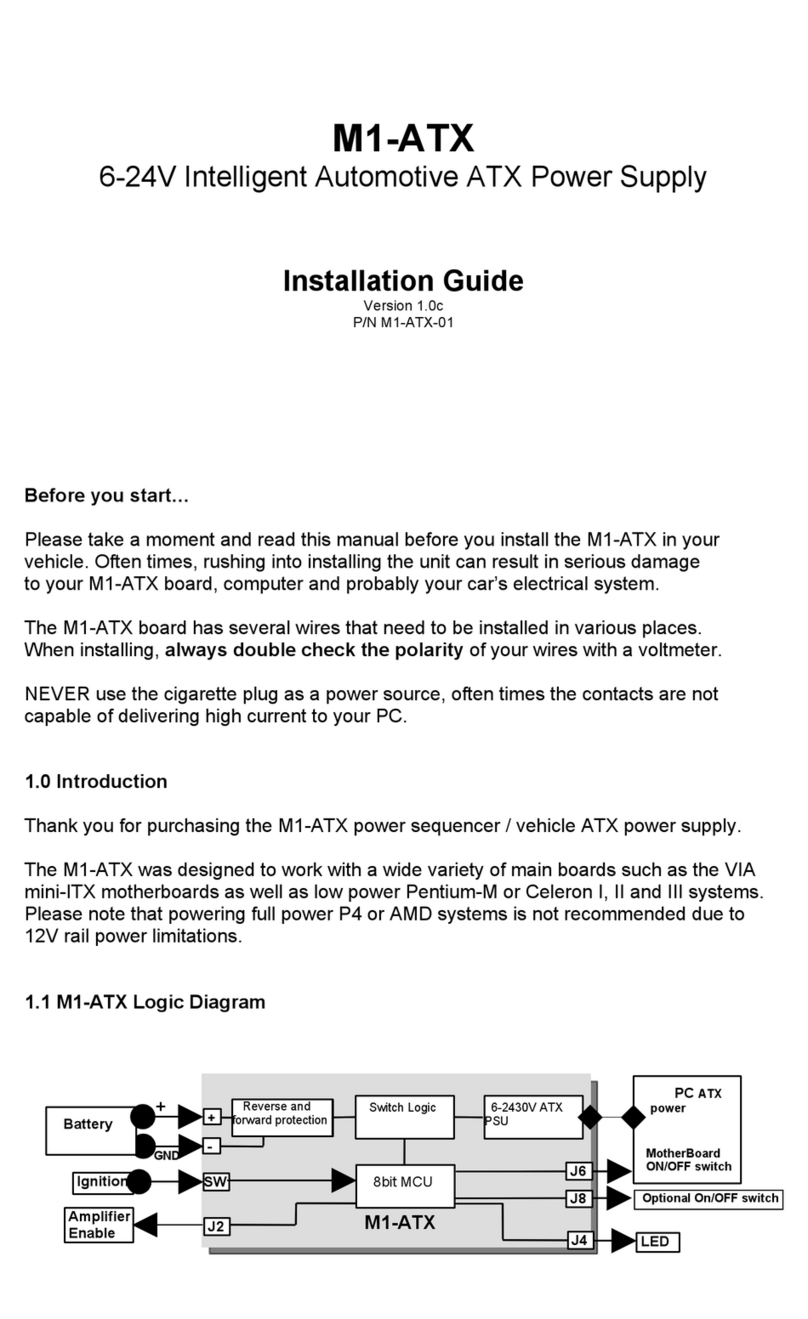
mini-box
mini-box M1-ATX installation guide

LEGRAND
LEGRAND WIREMOLD 1022306R2 0119 installation instructions
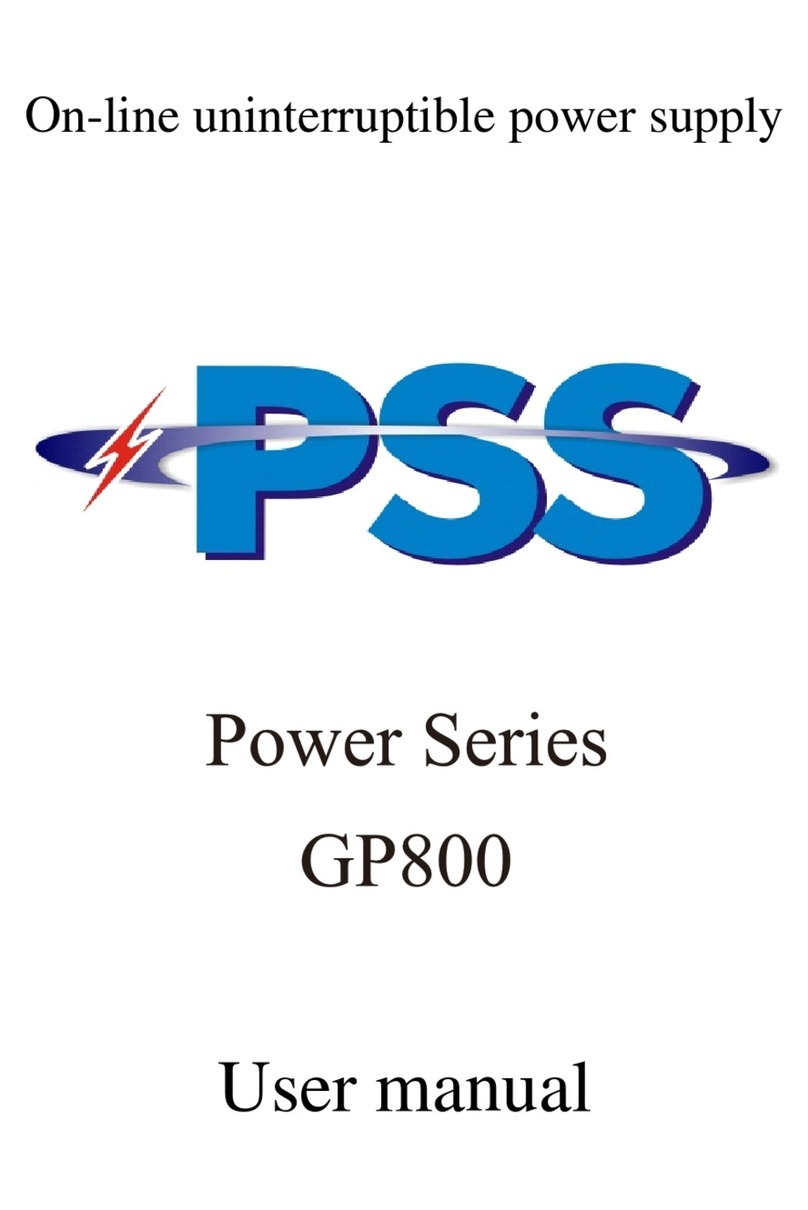
PSS
PSS GP800 Power Series user manual

Bluetti
Bluetti EB70 user manual
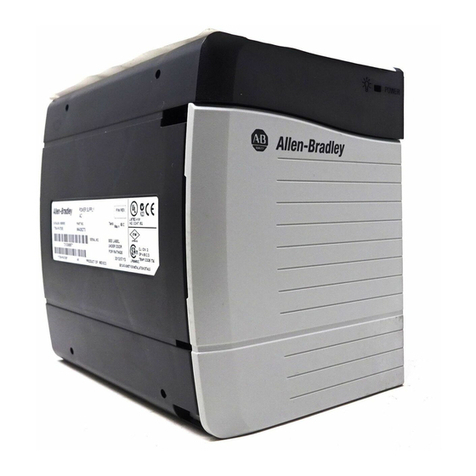
Allen-Bradley
Allen-Bradley ControlLogix 1756-PA75/B installation instructions
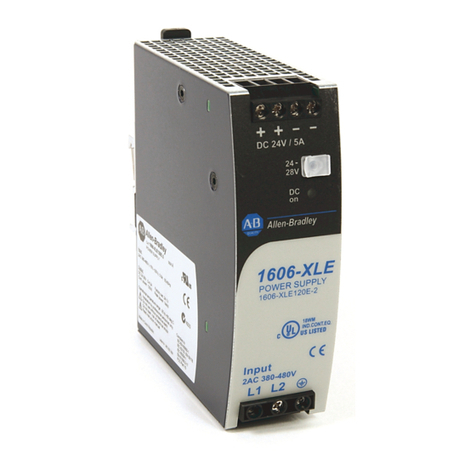
Rockwell Automation
Rockwell Automation 1606-XLE96B-2 instruction manual
